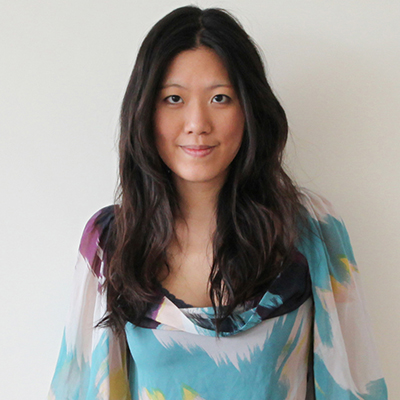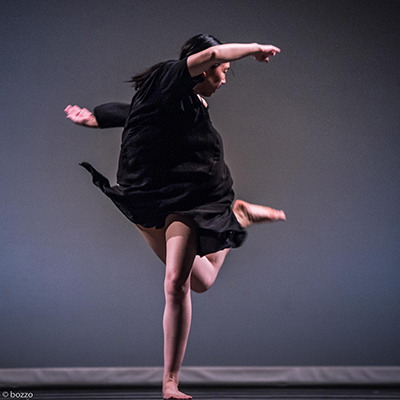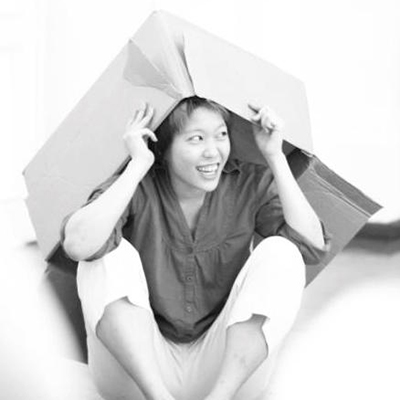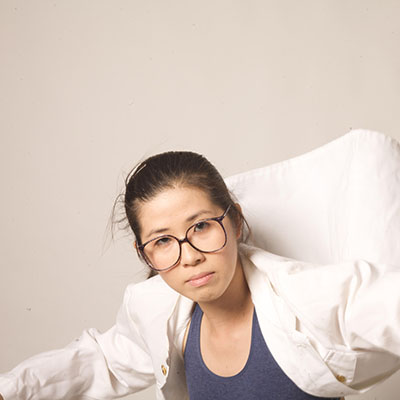Charemaine Seet
And participating artists
2019
DIGITAL INTERCHANGE FESTIVAL 2019-20
Digital Discussion: Responding to Miguel Gutierrez’s Article, ‘Does Abstraction Belong to White People?’
In 2018, New York City based choreographer Miguel Gutierrez wrote an article for BOMB about his artistic relationship to abstraction and the conflicts he has in regards to the cultural ownership of abstraction and postmodern dance inside a predominantly white society. In May 2019, choreographer and performance theorist Anh Vo responded to the article by interviewing choreographer Juliana F. May in Critical Correspondence and took on the ‘thorny problem of whiteness and abstraction’.
In December 2019, Critical Path responded with a digital meet-up provoked by these conversations. A group of dance and conceptual artists from Australia, China, Singapore and Taiwan, linked by their immersion in postmodern dance and conceptual/abstract art, begin their own conversation. Using both articles as a step-off point, they will address how they navigate an international arts culture which often expects them to create work about identity above abstract aesthetic interests. The digital meet-up is facilitated by dancer and choreographer Charemaine Seet.
ABSTRACT
New York City based choreographer Miguel Gutierrez wrote an article for BOMB about his artistic relationship to abstraction and the conflicts he has in regards to the cultural ownership of abstraction and postmodern dance inside a predominantly white society. In December 2019, Critical Path responded with a digital meet-up led by Charemaine Seet provoked by Gutierrez’s article and Anh Vo’s interview with choreographer Juliana F. May. A group of dance and conceptual artists from Australia, China, Singapore and Taiwan, linked by their immersion in postmodern dance and conceptual/abstract art, begin their own conversation…
“I was reading Miguel’s article again and this made me feel emotional: “Who has the right not to explain themselves?” Charemaine Seet
“It’s not only about how we see ourselves. It’s about our relationship to the world.” Ting-Ting Cheng
“It feels to me that there are different ways to read the article – ways to meet our own needs. And it might bring up anger or sadness or self-reckoning.” Faye Lim
“We all live in particular inherited power structures, and power structures that we participate in making and holding up…or we’re trying to undermine” Justine Shih Pearson
“I probably never would have understood what Miguel meant back when I was living in Japan.” Anna Kuroda
“But for me as an artist and as a person of color, I think a lot about abstraction as my means of working and as means of representation.” Shirley Dai
VIDEOS
Early this year, artists Charemaine Seet, Ting-Ting Cheng, Lu Shirley Dai, Anna Kuroda, Bernice Lee and Faye Lim, got inspired by their digital meet-up for the Interchange Online Festival and in order to take their thinking further each created a conceptual video. In these videos, the artists continue to think about the questions raised during their digital meet-up and explore how they relate to their practice.
‘An edited conversation between Ting, Marc and Tammy” by Ting-Ting Cheng
In this work, Cheng invited Paris based Taiwanese artist/researcher Marc Yuchieh Chan and Tammy Hsieh, the researcher of Kaohsiung Museum of Fine Art to discuss the articles, “Does Abstraction Belong to White People?” by Miguel Gutierrez, “On Whiteness and Abstraction: Anh Vo with Juliana F. May” which was written in react to the first article, and “Digital discussion: Responding to Miguel Gutierrez’s Article, ‘Does Abstraction Belong to White People?’ by Charemaine Seet and Participating Artists” which was an online discussion Cheng participated in where a group of artists discussed the first two articles. In the conversation, Cheng, as a previous immigrant in Europe who just moved back to Asia, brought the discussion to the context of Taiwan, examining the complex relationship between race, colonization, identity and art.
“Sometimes I just need to put my phone down, take my shirt off, give it to my phone, do something, then describe everything that is really actually happening and put it all in the title. There is nothing abstract about any of it at all, my friend.”
“Innermost ghost hosts almost post dance” by Faye Lim
This is an artefact of my feelings, thoughts and movement, between the months of April to June 2020. It exists for me as a paradox, bringing to mind (thank you, Jill) the notion of the “structure of feelings” (Raymond Williams). I conflate structure, reason, feelings and mess, and present them through this film, with pseudo-logic, bringing in references to abstractionism, post-modern dance aesthetics, my collaborative art-making practice with my young son, my propensity/ability to cry in public, Orientalism, and autoexoticisation. It also reflects my deep-seated need to engage with hierarchy and fold it, cut it, poke holes in it, dance with it and be with it. These are fueled by past conversations (such as a digital discussion organised by Critical Path Sydney, see below), and multiple readings, including Yutian Wang’s “Choreographing Asian America.” This film is dedicated to Justine Shih Pearson, for giving strength to my tears. It is made possible with the support of Dance Nucleus and Critical Path. Thanks to Ollie C for sharing your wonderful paper people practice with me, Alice Cheah for your artistry, fervour and trust and Xi Jie for your patient and profound partnership.
“Journey of a flying jellyfish” by Lu Shirley Dai
“This short work derives from my continuous contemplation around the question of what is dance and what is movement. The transition to return to my home country after seven years of living in New York City renders me a heightened sensibility to observe, analyze, digest and re-experience all forms of movements around me. Throughout this process I feel as if abstraction is no longer a rigid, dogmatic concept imposed onto me; nor am I urged out of necessity to perform my identity in its most blatant appearance. As I study these various movements, their innate rhythm, shape, sense of direction, energy and force, I perceive the connections, both formal and sensual, among them. They are weaved together by the practice of abstraction like a needle that threads myself, the known and the unknown nature and culture, into the creative canvas. Such practice alleviates the confusion of the alienated dancing body and nurtures an understanding and empathy towards the body, every, body.”
“Abstraction Belongs” by Anna Kuroda
“The word I wrote is ‘抽象’ means ‘abstract’ in Japanese.
抽 chu = taking/pulling out, absorb
象 shou = shape
Combining two characters is taking out the shape then become uncertain which means abstract in Japanese.
I took idea of white and black, light and shadow.
Obscured and the sun is moving makes everything moving.
A platform where I can shift myself to draw and explore where it isn’t necessary clear line or box.”
Video by Charemaine Seet. Sentences by Ting-Ting Cheng
“I created four videos inspired by the digital meetup and used audio and text from the discussion. LEGO mini-figures represent six of the participants, each denoted by their initials which appear on the chests of the plastic figures. The videos are metaphors which reference the state of otherness as felt by East Asian artists as confronted with the complications of the Western European postmodern dance and art scene.”
Video by Charemaine Seet. Voices of Faye Lim and Bernice Lee
“I created four videos inspired by the digital meetup and used audio and text from the discussion. LEGO mini-figures represent six of the participants, each denoted by their initials which appear on the chests of the plastic figures. The videos are metaphors which reference the state of otherness as felt by East Asian artists as confronted with the complications of the Western European postmodern dance and art scene.”
Video by Charemaine Seet. Voice of Lu Shirley Dai
“I created four videos inspired by the digital meetup and used audio and text from the discussion. LEGO mini-figures represent six of the participants, each denoted by their initials which appear on the chests of the plastic figures. The videos are metaphors which reference the state of otherness as felt by East Asian artists as confronted with the complications of the Western European postmodern dance and art scene.”
Video by Charemaine Seet. Voices of Anna Kuroda and Justine Shih Pearson
“I created four videos inspired by the digital meetup and used audio and text from the discussion. LEGO mini-figures represent six of the participants, each denoted by their initials which appear on the chests of the plastic figures. The videos are metaphors which reference the state of otherness as felt by East Asian artists as confronted with the complications of the Western European postmodern dance and art scene.”
These works were commissioned by Critical Path for the digital Interchange Festival 2019-20. All rights belong to the artist and Critical Path.
Participants of the digital meet-up
Charemaine Seet
Charemaine Seet is a Sydney-based dancer and choreographer that has created work in London, New York and Sydney. She is the director of Seet Dance, a contemporary dance school that introduces young dancers to the work of postmodern choreographers including Doug Elkins, Trisha brown, Yvonne Rainer etc. Recent Seet Dance projects have included Postmodern Zombies and Trio A with Rabbits.

Ting-Ting Cheng
Ting-Ting Cheng is a visual artist based in London and Taiwan who is interested in revisiting history through interpreting archival and found materials to explore how politics, race, and culture interplay with each other. She has had solo shows at Taipei Fine Art Museum and galleries in Taiwan, Hong Kong, Japan, Spain and London. Her works have been featured in biennales and arts festival throughout the world (from Moscow to Brazil) and she has participated in artists in residencies in Spain, Berlin, London, Manchester etc. Her works are in the collection of Taipei Fine Art Museum, National Taiwan Museum of Fine Art, Fundació per amor a l’Art and Fundación Entrecanales in Spain, and more.

Lu Shirley Dai
Lu Shirley Dai is a dance artist and filmmaker based in Beijing and New York City. Her works navigate a complicated space of aesthetics and styles through the lens of her Chinese cultural background and her revelatory encounter with postmodern dance. Recent works have included Putting My Chineseness and Scraps of Postmodernism in a Contemporary Washing Machine. She has designed and is currently teaching a contemporary dance course for the Central Academy of Fine Arts in Beijing.

Anna Kuroda
Anna Kuroda is a dancer and choreographer from Japan now based in Western Sydney. Her movement practice focuses on sensitivity to internal and external air flow around the body, sharpness, fragility and unique rhythm. She aspires to make work where, through focus and technical skill, the dancer’s body is, in a way, unseen; leaving cells and memories. In 2016 she was one of 6 finalists for the Toyota Choreography Award, Japan and a Casula Powerhouse Arts Centre Studios Switch resident for her work development ‘Kanji’. Her most recent work was Subtle Downtempo No performed by Raw Moves in Singapore.

Bernice Lee
Bernice Lee is a contemporary dance artist from and in Singapore. In her creations she deals with time as primary material. Her labours are rooted in improvisation, and sees art-making as a form of social activism. She co-directs Rolypoly Family with Faye Lim. With Chong Gua Khee, she has a joint practice The-Body-as-Theatre. An associate member of Dance Nucleus, she also enjoys teaching at various institutions. Currently developing her solo practice ghosting, she performed most recently at M1 Contact Festival, and can be found playing with #ghosting on Instagram.

Faye Lim
Faye Lim improvises, facilitates, performs, dances, makes, and mothers. In her recent performative works, she explores questions about the “personal persona” – how does she show up as herself in the work? How does she perform her desires, fears, unknowing, and personal history in improvised performances? Faye makes works alone or collaboratively, such as through Strangeweather Movement Group, which she founded to create and perform works that come and go. She co-hosts and facilitates dance improvisation and contact improvisation for adults, children and both together. As co-director of Derring-Do Dance, she makes body-based works and programmes, eg. Rolypoly Family and Body Smarts Through Movement Arts. Faye is an associate member of Dance Nucleus in Singapore.

Justine Shih Pearson
Justine Shih Pearson is a Sydney-based designer, creative producer, and scholar of contemporary performance and dance. Trained originally in theatre design at NYU’s Tisch School of the Arts, over 20 years she has collaborated on projects for live performance, museums, hospitals, film, new media, print and online publishing. She works closely with independent artists in particular, supporting critical discourse around practice. She has worked in leadership positions in the arts industry as producer of interdisciplinary film festival ReelDance, director of choreographic research centre Critical Path, and is currently chair of the artist-run Readymade Works.

Banner photo credit: Ashley Garrett
